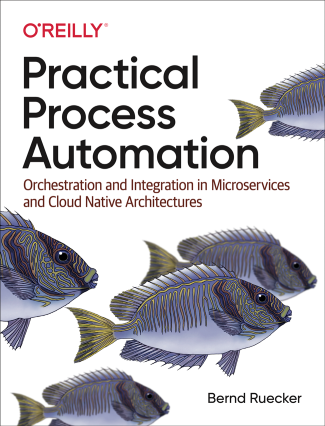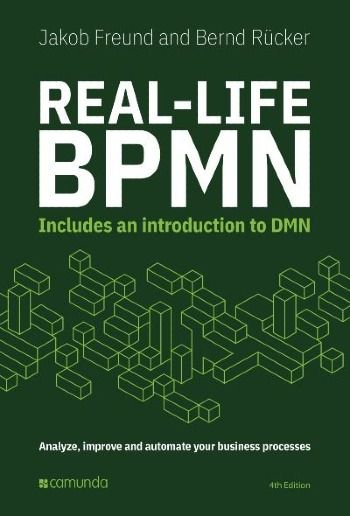I love to write, so I wrote two books you might be interested in:
- Practical Process Automation with O'Reilly, published in 2021
- Real-life BPMN, in its 4th edition, published in 2019
Practical Process Automation

Summary
In today’s IT architectures, microservices and serverless functions play an increasingly important role. But how can you create meaningful, comprehensive, and connected business solutions if the individual components are decoupled and independent by design? This book provides a framework through examples and practical advice, and reveals how you can design complex processes in such an environment to deliver true business value.
Therefore, this book dives into a developer-friendly view on process automation and explains how process automation can be applied in modern system architectures and software development practices.
It focuses on lightweight workflow engines as the core component to make this happen, which should be part of every developers tool belt.
The book also discusses typical misconceptions around process automation and orchestration.
Why You Should Read This Book
- Digital transformation is happening everywhere and automation a must.
- Many processes are tailor-made to an organization’s needs, as this allows to differentiate from competition. Therefore they cannot be addresses by off-the-shelf application software.
- Automating these processes is complex and requires software engineering, but with specific characteristics and requirements.
- You will need a developer-friendly way to automate processes, leveraging lightweight workflow engine technology. This is exactly what this book explains to you.
Who This Book is For
This book targets software developers, software engineers and software or system architects that want to learn about process automation.
If you are a software developer, you might want to use a workflow engine within your application, service or microservice to solve hands-on problems. This book will help you understand which problems a workflow engines solves for you, and how you get started.
If you are a system architect, this book will help you understand opportunities and pitfalls around process automation. It will guide you through some tough architectural decisions and trade-offs, including how using a workflow engine compares to alternative approaches or if a workflow engine should be operated centrally or not.
But you can also benefit, if you work in another role:
- If you are an IT manager, the book can also help you to make better informed decisions and ask the right questions internally.
- If you are a business analyst, this book can help you if you are motivated to think a bit out-of-the-box and understand the technical side of things.
You will only need some general experience in the field of software engineering, but no other specific knowledge.
Real-life BPMN

Summary
This is the improved 4th edition of the very successful book "Real-Life BPMN" with excellent reviews on Amazon.com (don't forget to check reviews of the former editions).
In this book you will learn how to:
- Model processes with Business Process Model and Notation (BPMN)
- Successfully apply BPMN to real-world problems
- Use a practical approach to workflow automation with BPMN 2.0
- Align business, development and operations
- Understand how microservices impact business processes
- Implement BPMN across your organization
The definitive guide for process designers: provides an overview of business process notation, presents implementation guidance and best practices, and offers useful tips on what works and what doesn’t.
Truth be told, there are several BPMN books on the market. Some of them are quite good, so why should you care about this one? This book distills the experience the authors have accumulated while running Camunda, a company that delivers the leading open source workflow and decision automation platform. Camunda helped to define the BPMN specification, and during the past 15 years, they have applied BPMN to thousands of customer use cases. These were big businesses, small companies, and public institutions. Now you can benefit from this practical experience.
This book also gives an introduction to DMN for decision management, which you might know as business rules management (BRM).
This book is also available in German and Spanish.